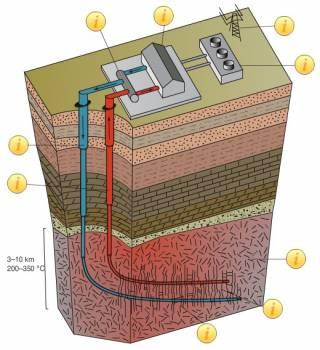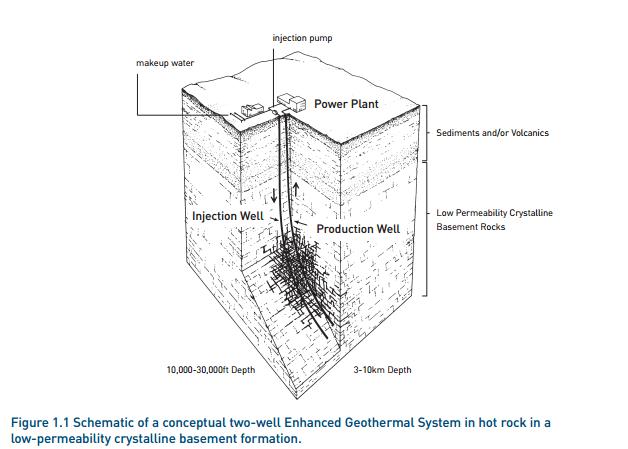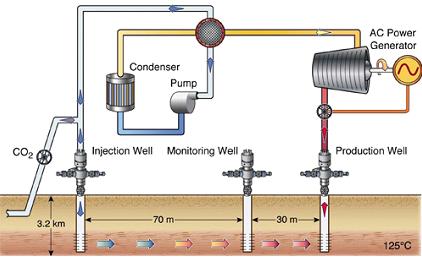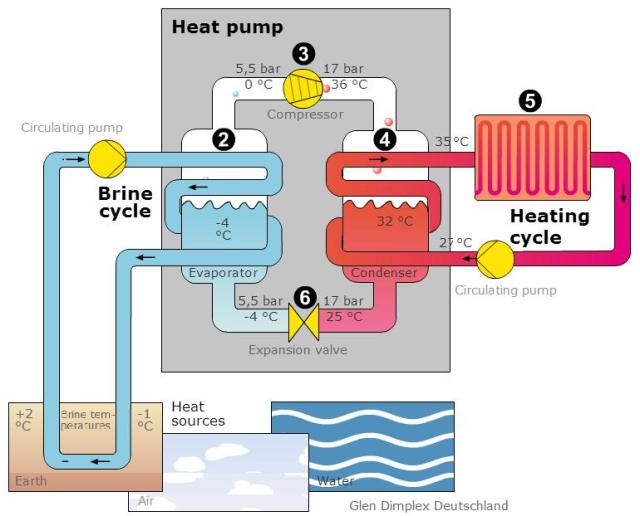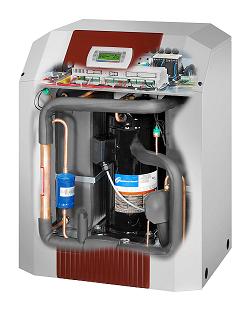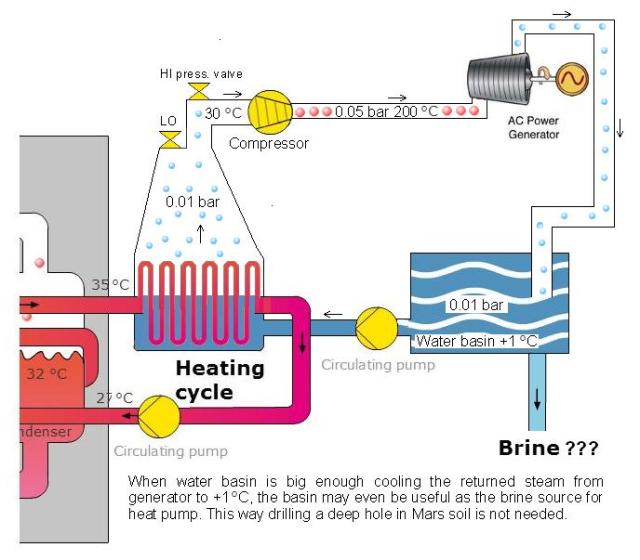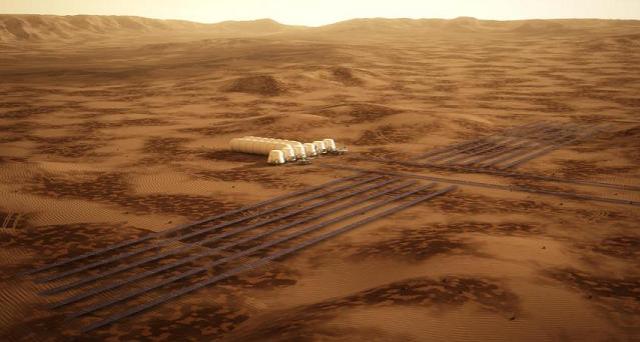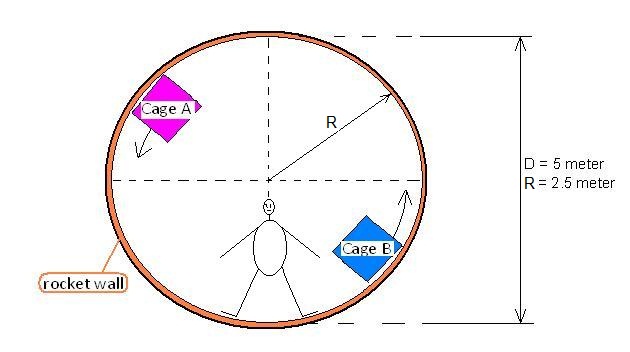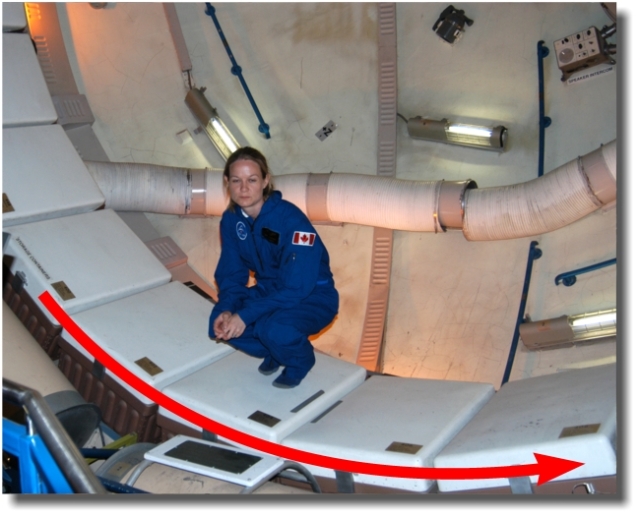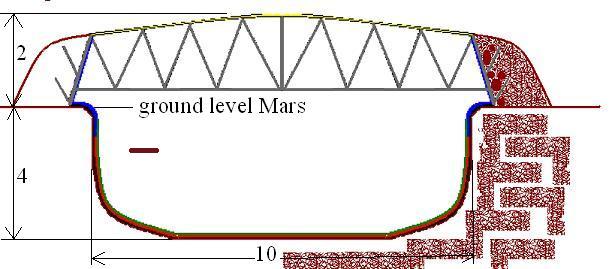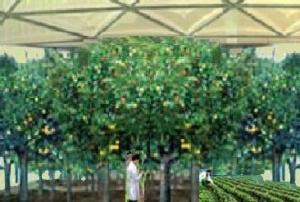Having a permanent supply of energy is crucial in the sustainability of a permanent base on Mars. Not only relaying on the energy through solar panels out of what the sun supplies. In the previous chapter I tried to give a permanent solution towards a constant supply in energy. Regretfully that solution cannot work. I have to come with a reliable form of energy other than solar energy, however in my alternative solar energy is still the start of the whole process. As long as we don’t know the weather conditions on Mars, where we e.g. don’t know whether there is a constant flow of air (wind) so much that wind-mills can be productive, we can only relay on the fact that there is the sun that supplies energy by means of solar panels.
The Mars-one group claims that the enormous amount of solar panels in front of their base is sufficient to supply the base of energy during daytime and at the same time to supply enough energy to the batteries for the energy needed during the dark hours. This is a plausible conclusion, probably based on well calculated theoretical measurements. However, how well calculated one can be? When something goes wrong or when the batteries cannot keep enough energy due to aging, you have a problem.
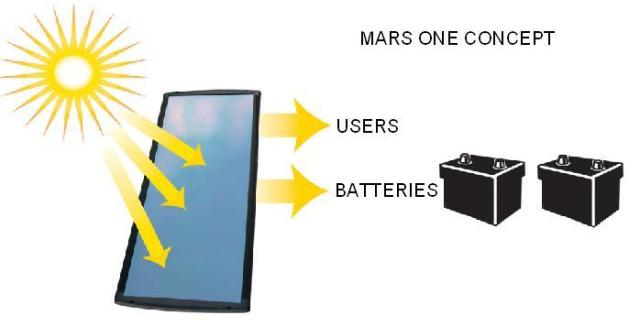
A very good battery lasts five years and then starts to lose its capacity. Mankind survives 70 years on average or 14 times very good batteries. A constant supply of batteries is not very likely. I am pessimistic in it to believe that when the first 20 or 30 people have landed on Mars, the continuation of the whole project will be questionable when the costs won’t balance the profits. When enormous amounts of uranium, gold, or whatever valuable minerals won’t be found on Mars the project may stop to exist.
Those 20 or 30 people cannot return to Earth. They will be on their own and need to be able to survive. That is impossible when they have to rely on solar power supported by batteries alone. They need to have an alternative storing energy in another form then batteries. In a form that supplies energy like the sun through heat or radiation or a mill through wind. Like fuel you burn in an engine that drives an alternator which supplies the electricity you need.
The good news is that there is no problem shipping such an ‘engine’ while the elements to fuel it are present on planet Mars. The elements are hydrogen and oxygen. The ‘engine’ that supplies electricity out of the interaction of these two elements, is called a fuel cell. The in my few only reliable other form of energy people can create on Mars, than the sun through solar panels. However, the solar panels are still needed turning water in its elements hydrogen and oxygen through electrolysis. There will be plenty panels so that cannot be the problem.
The fuel cell will only be ‘started’ when there is a need of extra electric energy. For example when the sun does not shine during the night or when there is a sandstorm. Every night or part of the night you don’t need the extra energy out of the fuel cell, the hydrogen and oxygen storage tanks will be filled till extra electricity is really needed. This way one can accumulate potential energy for months as long as the storage tanks are sufficient in seize. (A sandstorm on Mars can take several months).
A most pleasant result of the interaction of the two elements hydrogen and oxygen in the fuel cell is that the ‘exhaust gases’ are pure water which on their turn can be split again in the initial elements hydrogen and oxygen through electrolysis. Best is to bring the storage tanks from Earth or the tanks in the transport capsules from Earth to Mars can be used? These transport capsules have rocket driven landing equipment for positioning the capsule on the right location. I presume rocket fuel is stored in tanks you don’t need any longer once you have landed.
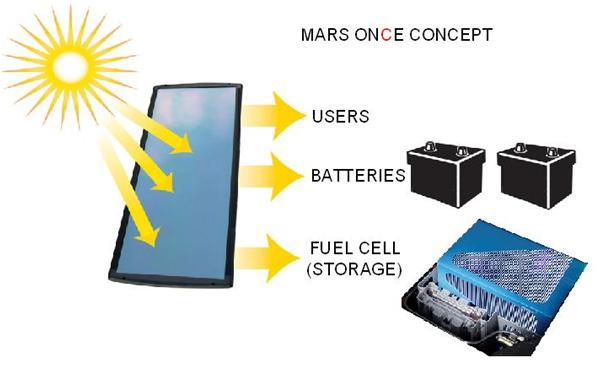
The hydrogen engines of the future don’t burn hydrogen. Burning hydrogen is very inefficient because lots of energy is lost into heat. Instead there is a kind of ‘cold’ reaction between hydrogen and oxygen in the so called fuel cell. In this reaction an electric current is generated which is used to drive an electric motor and battery pack. Here below an explanatory principle of the fuel cell technology.
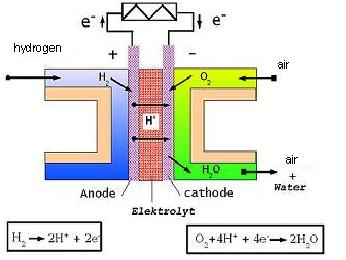
Hydrogen and oxygen are separately supplied to the fuel cell. The hydrogen at the anode and the oxygen at the cathode. In the cell these gasses are separated by a membrane. Using a catalyst, the hydrogen (H2) at the anode split into two protons (H+) and two electrons (e-). The electrons then flow through an electrical circuit to the cathode. This is the electric current that can be used to drive the electric motor and/or to load the battery. The protons flow through the electrolyte to the cathode. The protons and electrons unite at the cathode and react with oxygen (O2). In this process water (H2O) is formed.
A single cell produces a theoretical voltage of about 1.20 Volts, but in practice it is much lower. Between 0.5 and 0.8 Volts. To increase the current cells are stacked in series or parallel. The stack so formed is a “fuel cell” or “stack”.
In fuel cells higher efficiencies are created than what is possible with ordinary combustion engines, because the energy is not first going into heat to be then converted into electric energy.
So here we use hydrogen technology to transfer it directly into electrical energy. Electrical energy is the energy needed on Mars. The in my view only reliable form of energy one can even store other than the sun that only supplies its energy during the day and when Mars is not covered by sand storms or whatever else. It is crucial for survival of mankind on whatever planet having an alternative energy supply when the initial supply fails. I cannot emphasize this enough.
Now let’s see how far fuel cell technology has evolved on our own planet:
Of Mercedes:http://www.daimler.com/dccom/0-5-1228969-1-1401156-1-0-0-1401206-0-0-135-0-0-0-0-0-0-0-0.html
Mercedes-Benz B-Class F-CELL: The first fuel cell automobile in series production
Manufacture of a small series of the Mercedes-Benz B-Class F-CELL commenced in late 2009. With its 700-bar hydrogen tank in the sandwich floor unit, the first fuel cell passenger car from Mercedes-Benz to be produced under series conditions attains an operating range of around 400 kilometers. Its electric motor develops an output of 100 kilowatts, with a torque of 290 newtonmeters,´and thus has the power rating of a two-liter gasoline engine.
The clean, quiet, and powerful fuel cell drive unit consumes 3.3 liters per 100 kilometers (diesel equivalent) and makes for a top speed of 170 km / h. The next step toward market introduction has already been taken: In December 2010, Mercedes-Benz delivered the first of a total of 200 B-Class F-CELL cars in Germany and the United States. In California alone, 70 B-Class vehicles with fuel´cell will be handed over to customers by 2012.
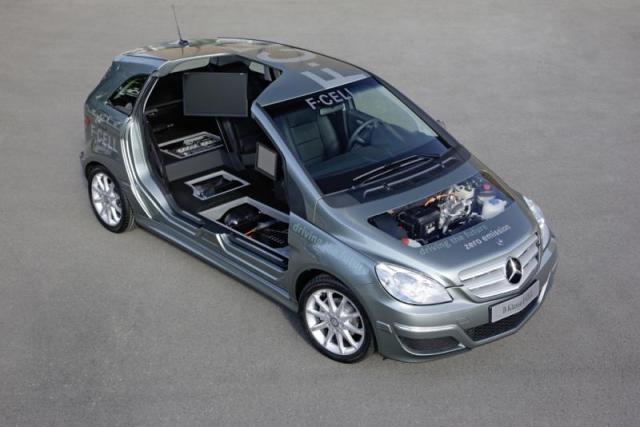 An individual fuel cell is only about two millimeters thick. Since it generates a comparatively low potential of less than 1 volt, several hundred cells are connected in series to form a so-called stack. The system potential thereby attained, amounting to 200 volts, is sufficient to power a vehicle.
An individual fuel cell is only about two millimeters thick. Since it generates a comparatively low potential of less than 1 volt, several hundred cells are connected in series to form a so-called stack. The system potential thereby attained, amounting to 200 volts, is sufficient to power a vehicle.
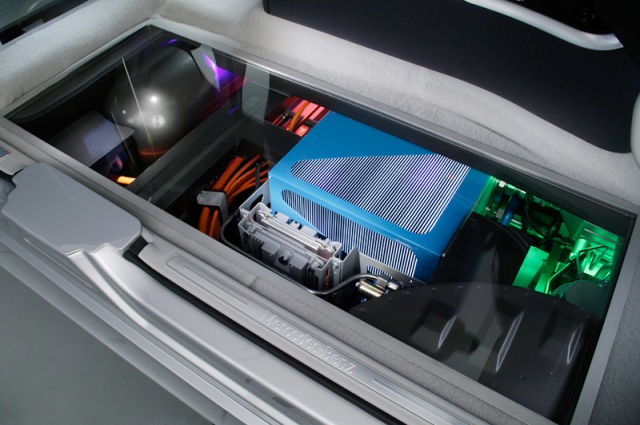
And how interesting even at Nasa:http://machinedesign.com/article/nasa-develops-fuel-cells-for-planetary-rovers-0510
NASA engineers at the Glenn Research Center in Cleveland are developing a fuel cell that will let planetary rovers operate longer, especially in the cold and dark. Current rovers rely on batteries recharged with electricity from solar panels. But NASA wants to send rovers into canyons and valleys on Mars that aren’t in the sunlight because these shaded areas are more likely to have water (ice) near the surface than areas exposed to sunlight, and finding water would change NASA’s plans for exploring Mars. These areas are also colder than those exposed to sunlight, which reduces battery capacity. So today’s rovers have limited time — anywhere from a few hours to a few days — to explore shadowed areas. But a fuel cell could power a rover for weeks at time, despite the cold and darkness.
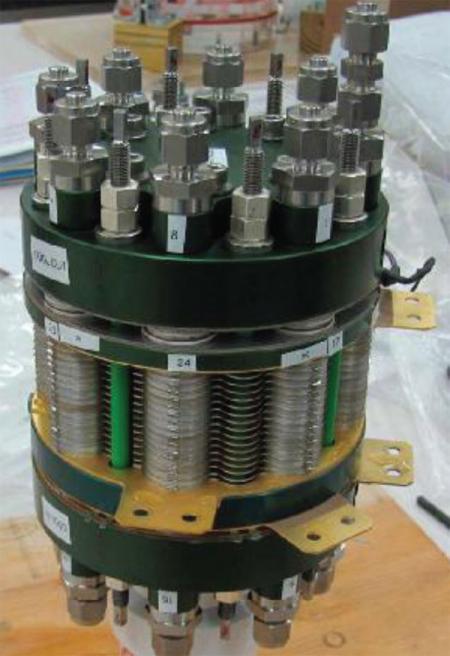
Fuel cells used in space exploration use hydrogen and pure oxygen, whereas those built for use on Earth rely on hydrogen and air, though only the oxygen from the air is really needed. Using pure oxygen eliminates the need to get rid of impurities found in air. This is one way NASA can boost fuel-cell efficiency.
And although it seems contradictory, NASA’s nonflow-through cells are larger and heavier than conventional fuel cells. This lets NASA use higher pressures and temperatures inside — about 70°C and 45 psi for both the hydrogen and oxygen, compared with just a few pounds/square inch over ambient and room temperature for conventional cells. All these factors make the rover cell more efficient at converting hydrogen and water to electricity. So the larger size and weight of the NASA cell is offset by the additional electricity it can extract from the store of water carried onboard the rover or spacecraft.
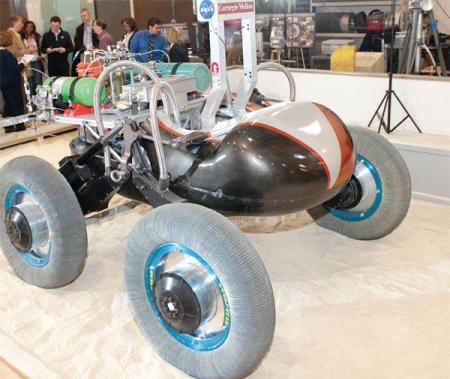
NASA can also configure a rover to use solar panels to generate electricity for converting water to hydrogen and oxygen through electrolysis. The rover would use the hydrogen and oxygen to resupply the fuel cell’s reactant tanks and extend its power generation capability.
Well, type ‘ fuel cell technology’ in Google search and you’ll find lots examples which are experimental as well as daily used.








